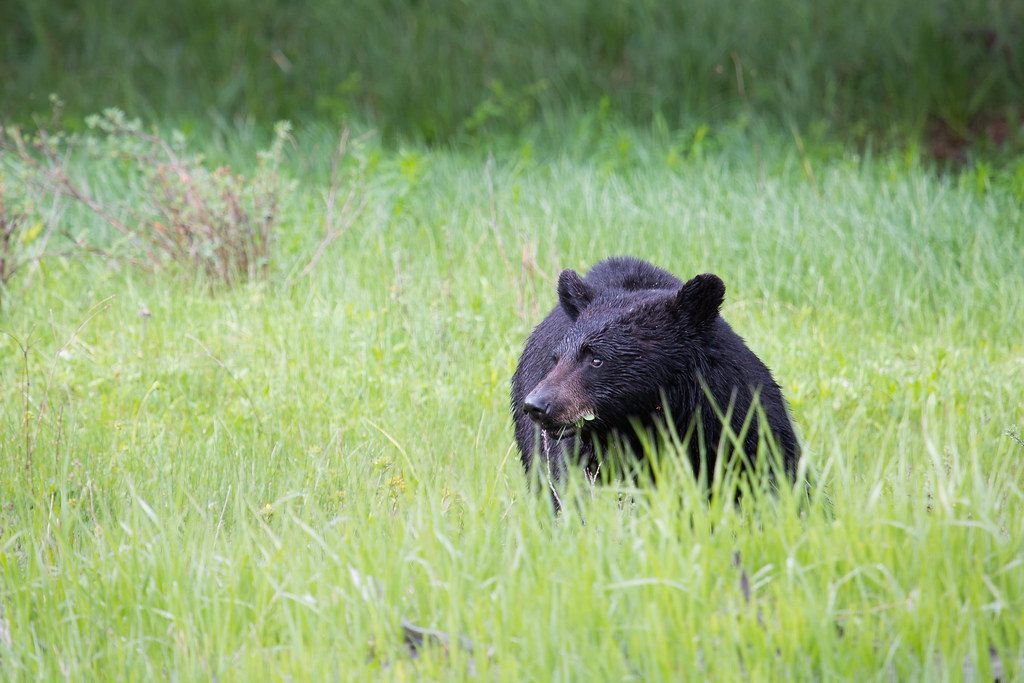It’s not unusual for the staff and students at TRU to be informed of special guests visiting our campus. In the past, the university has hosted the likes of prime ministers, astronauts, music producers, and others. However, early Tuesday evening, some students and faculty on campus were surprised by another guest of a different kind, a North American black bear.
Shortly before 5 p.m., onlookers became aware of the bear’s presence as it roamed around the Clock Tower.
According to a statement from TRU, campus security was notified of the bear’s location and a B.C. conservation officer was dispatched to the scene. The animal was last reported being seen by the Open Learning building but was still on the move.
Although these encounters are rare at TRU, they’re not unheard of. During the pandemic in late 2021, another bear was similarly spotted touring the grounds, prompting a similar alert to be sent out. According to BC Parks, black bears can be found in virtually every part of our province, including within the outskirts of towns, major cities and suburbs.
“In order to prepare for hibernation, bears enter into a period called hyperphagia from late August to November.” Said WildSafeBC Kamloops Coordinator, Olivia Lemke.
“Hyperphagia translates to extreme eating, and bears may consume over 20,000 calories per day. During this time, bears are active day and night, and may forage over 17 hours per day.”
Similar to badgers and wolverines, black bears are notorious scavengers looking for food wherever they can.
“Bears are highly food motivated,” said Lemke. “And if they are successful at receiving easy calories within our communities, they may linger. Bears that spend time foraging in our communities may become more persistent, leading to property damage, conflicts with pets, and collisions with vehicles. There is always a risk to public safety if a bear is surprised or confined. It is imperative for everyone to secure any potential sources of calories for bears so that they are not rewarded for coming into our communities.”
For those who are considering hitting the trails this season, Lemke offered the following tips:
- Remember, BC is Wildlife Country. Always assume you may encounter wildlife and be prepared.
- Watch for bear signs such as scat, tracks, claw or bite marks on trees, and overturned logs, rocks or stumps where bears have looked for insects and their larvae.
- Obey any signage warning of wildlife activity or trail closures.
- Travel in groups and avoid surprising a bear by talking, singing or clapping your hands. Bear bells are not known to be effective.
- Keep your dogs on leash as wildlife may perceive them as a potential threat or prey.
- Always carry bear spray and learn how to use it and transport it safely.
In the event that you find yourself in an encounter with a bear, Lemke said the best course of action is to stop, remain calm and never turn your back on the animal or run away.
“[Running] can instigate a chase response. Keep your eye on the bear and back away slowly, talking calmly to let it know you are human. Yelling or screaming at the bear can startle or surprise it, which could lead to an attack.” She said.
Regardless of whether it is a bear or any other large predatory animal, Lemke wished to remind citizens how important it was to report the encounter to the BC Conservation Officer Services RAPP line at 1-877-952-7277 as soon as possible. For more information, visit WildSafeBC, follow WildSafeBC Kamloops on Facebook or contact WildSafeBC by phone at 778-257-7036 or email kamloops@wildsafebc.com.

